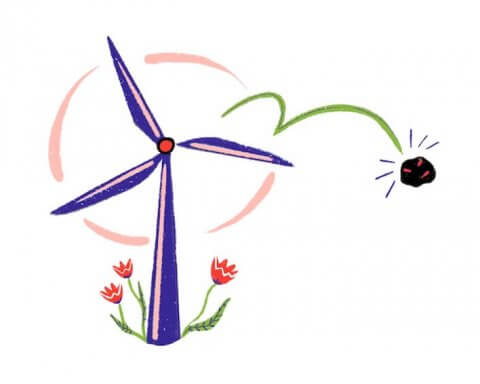For the past three years in a row, Volkswagen has sold more vehicles than any other carmaker on the planet. Yet that achievement has won it little applause.
The German carmaker’s profits and share price have languished, and the sales numbers have been overshadowed by one of the most damaging scandals in corporate history: accusations that it installed illegal software in its diesel models to circumvent tightening emission rules. VW, whose brands also include Audi and Porsche, has paid billions of dollars in fines and compensation.
That’s not all. This past April, the European Commission accused the company of colluding from 2006 to 2014 with Germany’s two other big carmakers, Daimler and BMW, to restrict the development of clean emissions technology in Europe. Each faces fines of up to 10% of its annual worldwide sales.
To VW’s credit, however, it is now trying to turn over a new leaf. Instead of growth at all costs, a policy often blamed for encouraging “diesel-gate,” a new chief executive, Herbert Diess, is putting the emphasis on improved financial performance.
And a centrepiece of that shift is a focus on green technology.
VW’s “electric offensive,” unveiled on March 12, is the most ambitious commitment of any carmaker to electric vehicles. It aims to launch almost 70 new electric models over the next decade, up from the 50 previously on the drawing board.
The company has pledged to spend €30 billion on the electrification drive by 2023, including a possible investment in battery cell plants in Europe and 400 fast-charging stations along European roads. It expects to deliver 22 million electric vehicles by 2028, almost 50% more than its previous target.
A new subsidiary known as Elli – short for electric life – will sell wall boxes, powered by renewable electricity, for recharging electric car batteries at home. It plans to install 3,500 charging points at employee car parks attached to VW plants.
If all goes to plan, electric vehicles will make up more than 40% of VW’s fleet by 2030. It aims to achieve carbon neutrality in all its operations by 2050. “The targets of the Paris agreement (on climate change) are our yardstick,” Diess says.
The transformation will not be easy for a company of VW’s size. In particular, it could unleash a battle royal with German trade unions, which backed the growth-first strategy as a way of ensuring job security for workers. Even so, Diess promised as he outlined the new plan that “the supertanker is picking up speed.”
Brazilian investigators have yet to nail down what caused a mining-waste dam to burst on January 25 near the town of Brumadinho in the southeastern state of Minas Gerais. The resulting avalanche of toxic mud killed about 300 people as it raced towards the town, burying a cafeteria, an inn and other buildings.
What is certain, however, is that the disaster has sullied the reputation of Vale, the global mining giant which owns the iron ore mine outside Brumadinho that feeds the dam. Among its many other interests, Vale is a prominent player in Canada’s mining industry through its 2006 purchase of Inco, at the time the western world’s biggest nickel producer.
Vale now faces a torrent of criticism, starting with the question of whether it learned anything at all from the 2015 collapse of a similar mine dam in Brazil, jointly owned with BHP. That tragedy cost 19 lives.
Along with other investigations, the mines and energy ministry has launched a probe under Brazil’s anti-corruption law into allegations that Vale colluded with auditors to misrepresent the safety of the Brumadinho dam.
Much of the concern stems from the fact that dams like the one outside Brumadinho are among the simplest and cheapest ways to dispose of toxic mine waste. Known as upstream tailings dams, they start as raised embankments made of compacted earth to contain the muddy waste pumped out of a nearby mine. As the bottom layer of mud dries, the dam is raised and enlarged by building more embankments upstream of the original one.
One risk is that the mud foundation becomes unstable as waterlogged soil starts to flow like a liquid, a process known as liquefaction. Experts are confident that liquefaction played a role in the Brumadinho dam’s collapse; they are less sure what caused it.
Pending the outcome of the investigations, the Brazilian authorities have imposed tight restrictions on upstream mine-waste dams, including requiring improved monitoring devices and detailed emergency plans.
The accident has taken a toll on Vale. Chief executive Fabio Schvartsman and three other senior managers stepped down in early March after prosecutors recommended they be “temporarily” relieved of their duties.
Vale shares lost almost a quarter of their value in the days after the accident and, as of mid-April, had yet to recover all their losses.
The company has denied any interference in the oversight of its mine dams, and Schvartsman has insisted that his handling of the accident was “absolutely appropriate.” Still, he acknowledged that his presence had become an “inconvenience” for the company.







